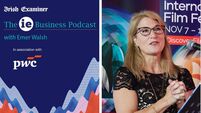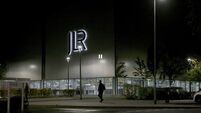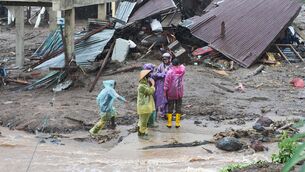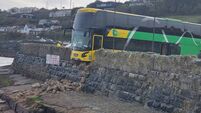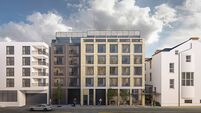Blockchain can help fuel bright future for community renewable energy

Blockchain and data analytics may help Ireland unlock the potential for community-led renewable energy generation, says Prof Tony Day, executive director of the International Energy Research Centre.
Developing a renewable energy supply model that is profitable for investors within communities will be one of the key topics when Tyndall UCC-based IERC hosts its national conference in Fota Island Hotel, Cork, on Thursday, April 11. Ireland has a distance to travel, but it is making real progress.
“I began researching and teaching this stuff in London in the early 1990s,” remarked Professor Day. “Back then, most people thought it was just a pipe dream. Today, London has 50GW of solar panels installed. Ireland’s wind energy deployment is world leading.
“Now, we are seeing that blockchain and improvements in power electronics are empowering real change in the sector. We still have a lot more to do, but we have come a long way. I am very optimistic about the future of renewable energy generation in Ireland.”
Science Foundation Ireland (SFI) has invested heavily in supporting the third level research brain power needed to underpin the country’s future in renewable energy.
Earlier this month Ministers @HHumphreysFG and @JohnHalligan announced an investment of over €100 million in 6 new SFI Centres for Research Training. These centres are open for recruitment - postgraduate students across the country are encouraged to apply https://t.co/H2CugTlCjd pic.twitter.com/ntnbtwVVjY
— Research Ireland (@Researchirel) March 21, 2019
SFI is supporting IERC’s energy project partnerships with industry leaders, the work of the UCD Energy Institute, and energy-focused research projects in Marei, the Marine Institute and others.
Two separate projects on the Dingle Peninsula give an insight into the role communities can play in driving renewable energy deeper into Irish society. Since 2018, ESB Networks has been partnering on smart network research projects and trials with almost 5,000 homes, farms and businesses on the peninsula.
Meanwhile, Solo Energy is engaging with local industries and communities, distributing battery stores, promoting the use of electric vehicles in homes and businesses. Solo Energy then brings these renewable assets together in a grid. It calls this shared digital network its ‘virtual power plant’, a network of shared energy assets taking on the societal role once occupied by a big industrial power plant.
Naturally, community-based projects are just one part of a bigger picture. The IERC and other renewable energy agencies are making progress on research projects with industry partners in wind, solar, heat, biomass and ocean energy etc. The starting point for discussion in Fota will be the opportunities for communities to aspire to 100% renewable energy self-sufficiency.
“The question is how do you attach a value to renewable energy generated within the community,” said Tony Day.
How do we move from the old model of energy generated in one plant far from the point of use? With that model, the energy goes in one direction, and the money goes in the opposite direction. How do we get to a model where the energy is generated locally, and the money stays in the community? This model would see people in the community trading with one another
Community-driven energy models are evolving rapidly in parts of Germany, Spain, Denmark and the UK.
While the first solar panels were expensive, in recent years less costly Chinese models have been snapped up by local community networks, with participants trading in shared grids.
The community model is in its infancy in Ireland, but the Dingle projects are proof positive that there is an appetite for more.
Individuals in rural communities who have invested heavily in solar, wind and biomass energy projects have criticised the Government for its failure to deliver on anticipated feed-in tariffs, the grant-aided model which gave the renewable sector a kickstart in Germany and elsewhere.
When the Department of Agriculture the unveiled €10m in grants for rural renewable energy projects under the TAMS environmental farm scheme, the IFA described this as a token amount in the context of what is needed to drive on the rapid expansion of Ireland’s circular bio-economy, which encompasses renewable energy.

Many businesses are driving on without waiting for greater state support. ABP this week teamed up with Natural Capital Partners with a plan to power all of its sites upon the island of Ireland exclusively from wind energy. It aims to be using 100% renewable energy by 2020. Other meat plants, dairy companies, beverage plants and distilleries are on a similar path.
“Most companies once saw renewable energy as part of their CSR functions, now more and more are seeing renewable energy as key to the future of their business. Companies like Apple and Google have developing an environmental agenda,” said Prof Day.
“Ireland is making progress. We’re seeing some great forward-thinking, and some great leadership coming from industries. A lot of people are also showing great interest in the energy projects in Dingle.
“There are good examples of community renewable models all across Europe. In Ireland, we’re basically talking about just one set of wires and one set of pipes. Our focus is on developing efficient, profitable renewable energy models. We’d like to ask questions about how we can accelerate engagement in Irish communities.”
And this question will be developed by industry leaders at next month’s IERC national conference in Cork. Energy tech experts from firms such as Energy Elephant and Climote will discuss sustainable security of supply of energy that is cost effective and competitive.
Industry experts from Ervia, ESB, Shell, Eirgrid as well as international speakers from IBM, Oakridge National Lab, Joule Assets, World Green Building Council and UCLA will deliver presentations and lead panel discussions on how to accelerate the commercialisation of energy research.
www.ierc.ie/news/ierc-2019-conference/







